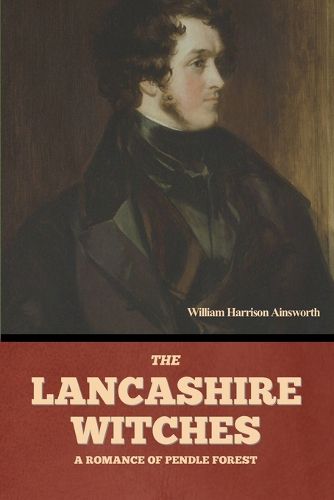Readings Newsletter
Become a Readings Member to make your shopping experience even easier.
Sign in or sign up for free!
You’re not far away from qualifying for FREE standard shipping within Australia
You’ve qualified for FREE standard shipping within Australia
The cart is loading…






The Lancashire Witches is the only one of William Harrison Ainsworth's forty novels that has remained continuously in print since its first publication. It was serialised in the Sunday Times newspaper in 1848; a book edition appeared the following year, published by Henry Colburn. The novel is based on the true story of the Pendle witches, who were executed in 1612 for causing harm by witchcraft. Modern critics such as David Punter consider the book to be Ainsworth's best work. E. F. Bleiler rated the novel as "one of the major English novels about witchcraft".
The subject of the Pendle witches was suggested to Ainsworth by antiquarian and long-time friend James Crossley, President of the Chetham Society. During 1846 and 1847 Ainsworth visited all of the major sites involved in the story, such as Pendle Hill and Malkin Tower, home of the Demdikes, one of the two families accused of witchcraft. He wrote the story in 1848, when it was serialised in the Sunday Times newspaper. On completion of the work, Ainsworth was paid GBP1,000 (equivalent to GBP127,000 in 2023) and the copyright reverted to him.
As was common practice at the time, the novel was published in a three-volume set known as a triple decker. The first edition was produced by Henry Colburn in 1849, with the subtitle "A Romance of Pendle Forest". At GBP1 11s 6d, about the amount that a skilled worker could earn in a week, it was expensive. Routledge published an illustrated edition in 1854, reissued in 1878. The twelve full-page illustrations were by John Gilbert.
Ainsworth based his story largely on the official account of the Lancashire witch trials written by the clerk to the court, Thomas Potts, first published in 1613 under the title The Wonderfull Discoverie of Witches in the Countie of Lancaster. Potts himself makes an appearance in the book, as a "scheming and self-serving lawyer". The novel consists of four parts, each written as a third-person narrative. (wikipedia.org)
$9.00 standard shipping within Australia
FREE standard shipping within Australia for orders over $100.00
Express & International shipping calculated at checkout
The Lancashire Witches is the only one of William Harrison Ainsworth's forty novels that has remained continuously in print since its first publication. It was serialised in the Sunday Times newspaper in 1848; a book edition appeared the following year, published by Henry Colburn. The novel is based on the true story of the Pendle witches, who were executed in 1612 for causing harm by witchcraft. Modern critics such as David Punter consider the book to be Ainsworth's best work. E. F. Bleiler rated the novel as "one of the major English novels about witchcraft".
The subject of the Pendle witches was suggested to Ainsworth by antiquarian and long-time friend James Crossley, President of the Chetham Society. During 1846 and 1847 Ainsworth visited all of the major sites involved in the story, such as Pendle Hill and Malkin Tower, home of the Demdikes, one of the two families accused of witchcraft. He wrote the story in 1848, when it was serialised in the Sunday Times newspaper. On completion of the work, Ainsworth was paid GBP1,000 (equivalent to GBP127,000 in 2023) and the copyright reverted to him.
As was common practice at the time, the novel was published in a three-volume set known as a triple decker. The first edition was produced by Henry Colburn in 1849, with the subtitle "A Romance of Pendle Forest". At GBP1 11s 6d, about the amount that a skilled worker could earn in a week, it was expensive. Routledge published an illustrated edition in 1854, reissued in 1878. The twelve full-page illustrations were by John Gilbert.
Ainsworth based his story largely on the official account of the Lancashire witch trials written by the clerk to the court, Thomas Potts, first published in 1613 under the title The Wonderfull Discoverie of Witches in the Countie of Lancaster. Potts himself makes an appearance in the book, as a "scheming and self-serving lawyer". The novel consists of four parts, each written as a third-person narrative. (wikipedia.org)